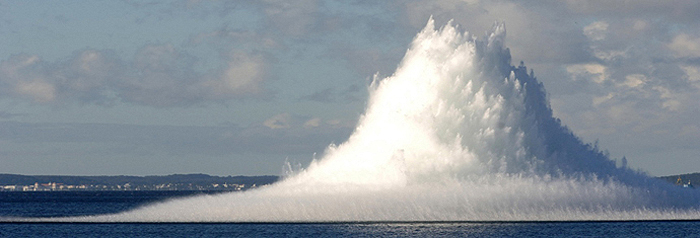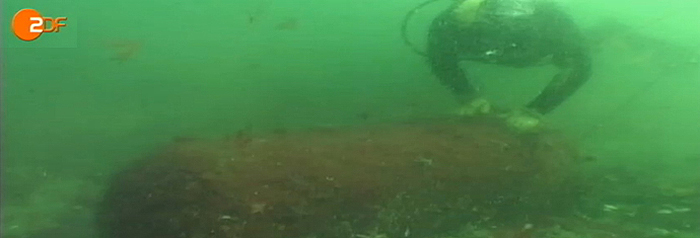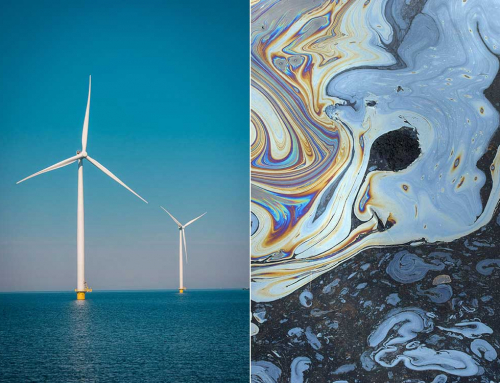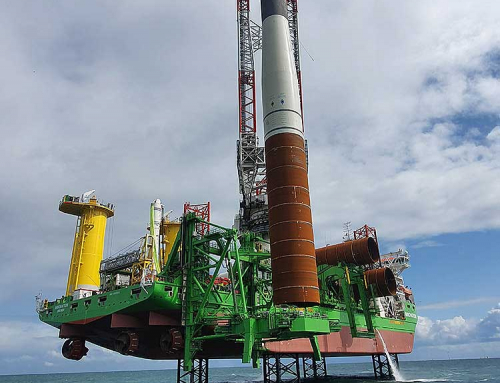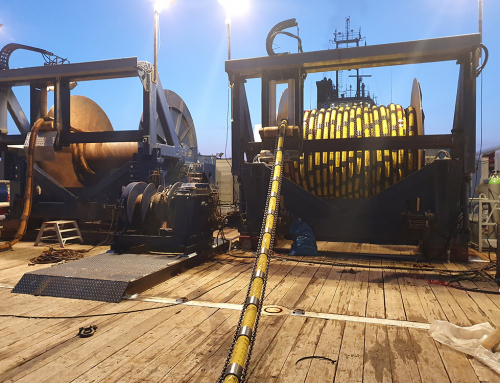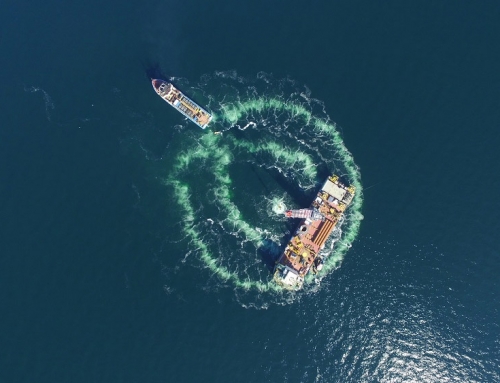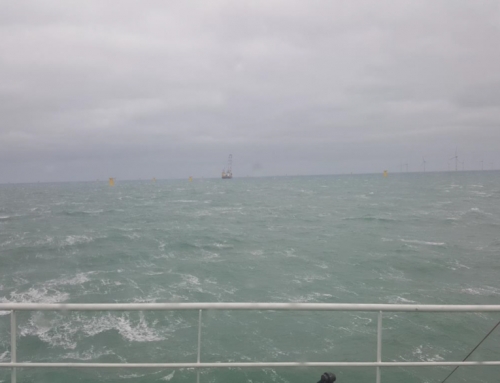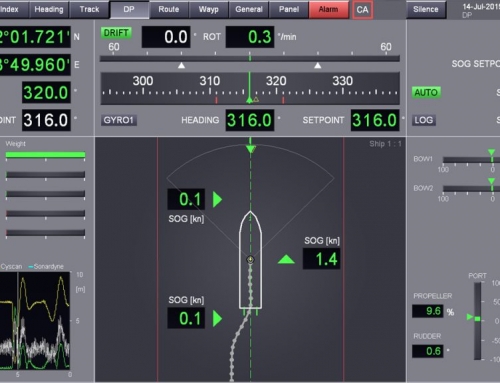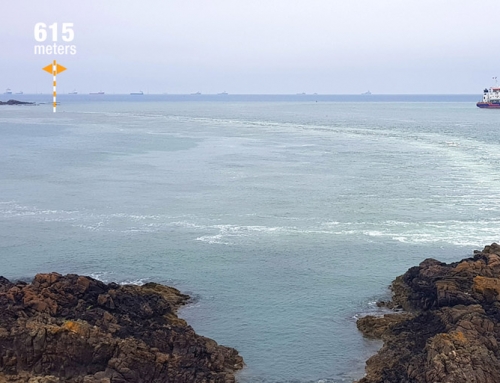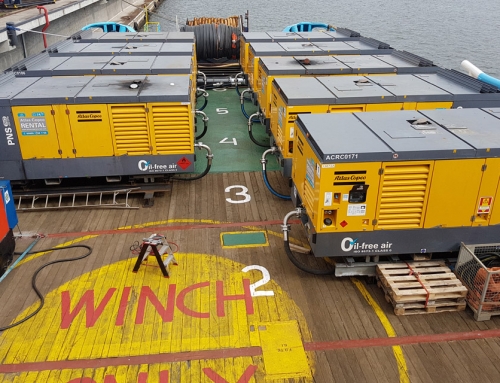Since February 20, 2012, they have blasted again.
Ammunition in the Baltic Sea is becoming more and more of a problem for the environment. The Kolberger Heide northeast of the Kiel Outer Fjord was used as an ammunition dumping area after World War II. It was only in 2004 and 2005 that large numbers of torpedo heads and sea mines were discovered in various places. 2 kilometers from the coast, this is a constant danger to the entire area. Since February 20, 2012, under the State Criminal Police Office’s leadership, Kiel has been blown up. A disaster for nature, but above all for the animal world.
Ingo Ludwichowski, in an interview with Werner Evers, a freelance journalist
Ammunition in the Baltic Sea In 2006, we learned that the ammunition disposal service of the state of Schleswig-Holstein was blowing up old ammunition off the Baltic coast of Heidkate in the Kiel Outer Fjord. Mines and other major weapons were dumped into the sea there after World War II and have been rotting since then. At the time, we were increasingly devoting ourselves to protecting harbor porpoises. We got to know Sven Koschinski and other experts who made us aware that the blasting would destroy any protection efforts.
An explosion is the largest point source of the sound. It can lead to hearing damage in porpoises over 20 km away and death within a radius of around 5 km without shielding.
The NABU then, together with the Society for the Protection of Marine Mammals GSM and the Society for the Rescue of Dolphins GRD, initially started media work to point out this problem. We have publicly demanded that this be avoided.
When you talk about us, who do you mean by that?
In particular, Petra Deimer (GSM), Ulrich Karlowski (GRD), Sven Koschinski as a self-employed marine biologist, and I represent the NABU Schleswig-Holstein were significantly involved. Kim Detloff from the NABU federal association joined the team later. It was clear that if we want to achieve something in this area, we must educate and provide more knowledge. When we say something, it has to be well-founded – and we have to recognize when this knowledge has the greatest impact.
How exactly did you go about getting well-founded information?
On October 17th, 2007, we invited national and international guests to a large conference in Kiel for the first time. They were able to answer our first most urgent questions: How much ammunition is wherein the sea? What kind of ammunition is there? How dangerous is it to humans? What danger does it pose for marine organisms? What are the toxicological risks associated with explosives and their breakdown products? And, very importantly, what are the options for lifting it instead of blowing it up?
What do you think should be done with the ammunition?
So far, the standard has been that there is a mine, we put a sticky charge on, blow the thing up, and get rid of the problem.
At that time, a waterway was to be laid at the exit of the Kiel Fjord. Emergency anchorages must be shown. However, simply pulling an anchor through an ammunition area is not a good idea. So there was a legitimate interest in the ministry in getting that ammunition out of there.There are a couple of areas in which we, too, have to say that we cannot avoid the blasting for safety reasons out of concern for the people involved. Certain types of explosives are hard to handle if you don’t want them to blow up. Apart from that, it is possible to get large quantities of ammunition out of the Baltic Sea without blowing it up from our point of view.
At a hearing on November 28, 2011, in Kiel, the state recently announced lifting 99% of the ammunition. But you have to be careful. You count every cartridge here! A cartridge cannot be compared with a 450 kg TNT sea mine. You can’t just count. In fact, an attempt is made to raise the ammunition where it is not critical. This essentially happens with ammunition without a detonator and when it is known that it contains non-critical explosives. However, in many cases, one does not know the ammunition, then the temptation is great to press the detonation button.
How were you able to help solve the problem?
In preparation for the first symposium, Sven Koschinski initially just googled what information was available on this topic. We had read that already in Hong Kong bubble curtains shielded pile driving noises. Then we came up with the idea of applying the results to ammunition explosions. In principle, it was known that something like this could be used. But we didn’t know any details yet.
When it turned out that a company from Lübeck is active here, we asked. Mr. Grunau from the company Hydrotechnik Lübeck is enthusiastic about environmental protection and likes to try something out. He described the requirements for the first test. Together with the Bundeswehr, which provided a ship at the time, a simple bubble curtain was laid, which, however, flew away with the first detonation.
So we started investigating. Because it was not known whether bubble veils were even suitable for such large detonations. The question was: How much air do you have to pump down? How big must the radius of the bubble curtain be? Do you really need a complete radius? Which materials are actually able to survive the detonation? What does the whole thing cost? In the end, researchers from the German Armed Forces have also made a strong commitment with their measurement technology to adapt the bubble curtain to the necessary conditions.NABU, GSM, and GRD then ensured that companies active in this area could present themselves at the symposia. Of course, it is in our best interest to promote these techniques. There was also someone from America who found out what we were doing through Google. He was then able to present the robotics he had developed.
However, the exciting thing was that after this one-day symposium, the ministry actually realized that it couldn’t go on like this.It was suggested to sit down and consider how the Ministry can support and promote the methods presented. Some of these were only in the development phase or even only existed as an idea. But the common goal was to get away from explosions entirely.
The most dangerous thing about ammunition in water is the explosive itself. But what happens in the water when the ammunition is detonated?
Unfortunately, under the conditions prevailing in the sea, one cannot assume that the explosives will completely decompose. The response depends on various factors, such as the condition and age of the ammunition. At the end of the war, the production quality deteriorated because no more aluminum was available, and other materials had to be used instead.
It is also extremely explosive that larger parts of explosives can be washed up on the beach after the detonation. If a child finds one of the mostly yellow ‘crumbs’ and fiddles with it, it can be extremely dangerous. Tiny explosive particles are also ingested by mussels and thus end up in the food chain. That is why we say that blasting is not an optimal solution. In the future, all ammunition must be lifted. However, NABU recognizes that divers must not be endangered if they expose themselves to a high risk to life and limb.
The NABU was initially concerned with protecting the environment in the event of an explosion. What happened next?
We have set out to bring these topics forward in practice. Large series of tests were not possible. It costs a lot of money, and you need ships. For such measures, there is only a small time window in which they can be carried out at all. But it quickly became apparent that we can achieve something with the bubble curtain. Reductions of 12-15 dB were measured. With logarithmic scaling, this means a reduction in the danger area of up to 95%. If you previously had to expect impairments within a radius of 20 km, this is reduced to just 1 km with the bubble curtain. Nevertheless, there are still effects on-site because – to put it trivially – you are fishing for dynamite. However, we move partly in FFH (protected areas of the Fauna Flora Habitat Directive) and bird protection areas where impairments are only permitted to a minimal extent. Heidkate is located in such a marine reserve.
How did the public react to the issue?
There was a very nice NDR report based on our first press release. At that time, the NDR went underground and looked at the ammunition. There are a few very dedicated divers at NDR. In the interview, the ministry secretary claims that the ammunition is safely buried under mud. At the same time, you can see a diver from the NDR scratching TNT out of a rotting mine. This made it clear to everyone that the Environment Ministry was not really aware of the problem.
Mr. Ludwichowski, what exactly have you achieved through your work?
Since 2006, NABU, GSM, and GRD have helped ensure that the topic is openly discussed. In the meantime, there is a federal-state working group on our initiative. The Schleswig-Holstein Ministry of the Interior supports it. This, in turn, cannot solve the problem on its own. You have to consult the federal government for financial reasons. After all, he is the legal successor responsible for the ammunition dumped after World War II. In December 2011, the Bund-Länder AG presented a current situation report on ammunition in the sea in a comprehensive report. Unfortunately, the opportunity was wasted here to deal more critically with the risks with external experts’ help. The report is basically a success achieved by the nature conservation associations.
Ammunition is now also being discussed on an international level, such as HELCOM. At the moment, the Member States are still having a hard time dealing with conventional ammunition. But in connection with chemical ammunition, the topic of conventional contaminated sites will also come more and more into focus. Some countries such as Denmark or Russia do not yet want to face this problem for cost reasons. They know that in the event of a referral and critical evaluation, they must also take action. Both countries have huge problems with ammunition in the Baltic Sea because ammunition was still being dumped in their waters in the 1960s and 1970s.
Your initiative also gave rise to the technology of the so-called ‘large bubble veil’. Do you see yourself as a mentor, co-developer, or source of ideas for this development?
As a source of ideas, we are delighted when some people and companies take an entrepreneurial risk. The train is clearly heading in the direction that bubble curtains have to be used in many projects where there is noise underwater.
From an economic point of view, it was exciting for us to see how many companies could potentially be active in this area based in Schleswig-Holstein. Analytics, securing, salvage of ammunition – these are all areas in which local companies are active. That was also an interesting result of the first Kiel symposium.
We were able to make it clear to the Ministry of the Interior that every euro invested promotes a special, innovative part of the Schleswig-Holstein economy in the medium and long term. Hydrotechnik Lübeck is one of the profiteers with its bubble curtains. Mr. Grunau was able to open up a new field of business. In the beginning, he had to grow financially. But he brought the necessary ‘goodwill’ with him. In the meantime, he has been able to expand this technology, has converted a special ship for his work, and now earns his money in the offshore sector.
The federal government wants to phase out nuclear energy by 2030. Huge wind farms are currently being built in the North Sea. Large construction sites that also generate not inconsiderable noise. What conflicts of interest arise there? After all, it’s about our future electricity generation.
The oceans are noisy for many reasons. Piling work for wind farms, especially in the North Sea, has its negative part in this. This noise is different from explosions, where the full energy occurs immediately. With pile driving, there is a slightly slower increase in sound energy. On the other hand, the abundance of pile driving is dangerous for marine animals. A foundation sometimes requires more than 20,000 blows, the energy of which can accumulate in the ear to a harmful dose over many kilometers. Something needs to be done here too.
For a long time, the Federal Environment Ministry has resisted issuing conditions. Above all, the group of pure climate protectors feared an impairment in the expansion of wind energy. They have now recognized that the bubble curtain is an environmentally friendly solution. But the same applies here: Avoidance would be better. Simultaneously, the Federal Environment Agency has set limit values that are now required by the Federal Maritime and Hydrographic Agency. Hydrotechnik Lübeck can now offer the technology for the required noise reduction. For projects that cost billions, additional amounts of 30,000 to 40,000 euros per foundation no longer play a major role.
What has become of your initiative in the meantime?
Ammunition is everywhere in the seas. In November 2010, we held a second international congress in Kiel. Experts from many coastal regions were there. They reported on new findings and methods and on what is already happening in their countries. It became clear that this is an almost global problem. Off the Chinese, Japanese, Canadian, Italian, Norwegian, British, American coasts, off Hawaii, ammunition is everywhere.
We have given Europe the impetus to look into it in more depth. Here it was the first time that worldwide knowledge was gathered, here it was recognized that a lot of knowledge is already there. It turned out that not everyone has to start from scratch to solve the problem and instead use others’ knowledge and insights.
The topic of ammunition in the oceans is one of the most important nature conservation topics at NABU and, at the same time, one of the most successful campaigns we have launched worldwide.


